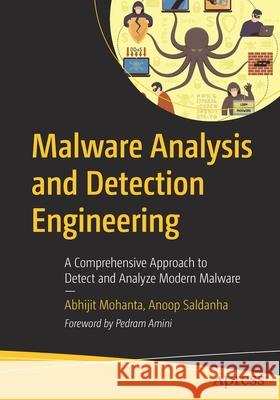Malware Analysis and Detection Engineering: A Comprehensive Approach to Detect and Analyze Modern Malware » książka
topmenu
Malware Analysis and Detection Engineering: A Comprehensive Approach to Detect and Analyze Modern Malware
ISBN-13: 9781484261927 / Angielski / Miękka / 2020 / 914 str.
Malware Analysis and Detection Engineering: A Comprehensive Approach to Detect and Analyze Modern Malware
ISBN-13: 9781484261927 / Angielski / Miękka / 2020 / 914 str.
cena 319,35 zł
(netto: 304,14 VAT: 5%)
Najniższa cena z 30 dni: 319,35 zł
(netto: 304,14 VAT: 5%)
Najniższa cena z 30 dni: 319,35 zł
Termin realizacji zamówienia:
ok. 16-18 dni roboczych.
ok. 16-18 dni roboczych.
Darmowa dostawa!
Beginning-Intermediate user level











